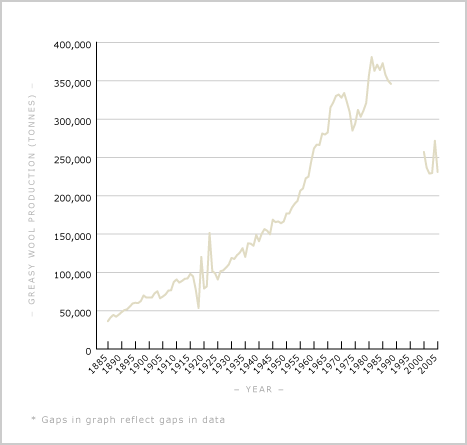
This graph shows changes in New Zealand wool production from 1885 to 2005, measured in greasy tonnes (unwashed wool that has not yet had the fatty lanolin removed). It reflects the general rise in both sheep numbers, and in wool weights per sheep over this period. Wool weights averaged about 2.25 kilograms per animal in 1885 compared with just over 5.8 kilograms in 2001. However there could be considerable variation in production between seasons. For example, after 2002’s hard winter and poor spring, the average wool weight per sheep fell to just over 5 kilograms per head.
Using this item
Te Ara - The Encyclopedia of New Zealand
This item has been provided for private study purposes (such as school projects, family and local history research) and any published reproduction (print or electronic) may infringe copyright law. It is the responsibility of the user of any material to obtain clearance from the copyright holder.
Source: Statistics New Zealand







Add new comment